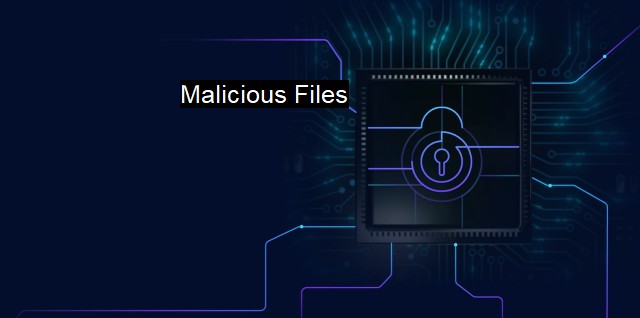What are Malicious Files?
Understanding and Combating Malicious Files: The Vital Role of Antivirus Software in Cybersecurity
Malicious files refer to a type of software or electronic files that are specially designed with the intention of causing damage, stealing data, or interrupting the normal functions of computer systems. These files exploit vulnerable systems, infiltrate them and result in various forms of damage which can either be temporary or permanent.Malicious files can also be referred to as malware, a generic term used to describe a host of harmful and intrusive software including ransomware, spyware, Trojan horses, worms, and so on. Notably, cybercriminals engineer these malicious files in a way that they tend to be well-disguised, impersonating legitimate files that would usually not draw the attention of the users or pose danger suspicions during normal interaction with their devices.
The intention behind the creation of malicious files greatly varies depending upon the objectives of the cybercriminals. Some malicious files exist purely to cause havoc through causing system and data corruption, bricking devices, or through being used as part of a larger sabotage operation. In contrast, other malicious files operate with more subtlety, hiding on infected systems and harvesting personal data, sensitive information, and login credentials, often being part of organised cybercrime efforts. While many malicious files are motivated by personal or financial gain, others may originate from state-sponsored actors, where geopolitical motivations and cyber warfare can be significant factors.
The complexity and dangers posed by malicious files have naturally led to the rise and growth of the cybersecurity and antivirus industry. They have become vital countermeasures in combating this prevalent threat in our increasingly digital world. A huge part of this industry involves the development of advanced antivirus software responsible for identifying, isolating, and neutralising the impact of malicious files.
Reputable antivirus software use heuristic and signature-based detection to identify malicious files. Heuristic detection utilizes algorithms to inspect files and identify common characteristics of malware without having to know the exact nature of the malware. Signature-based detection, on the other hand, matches files against an extensive library of known malicious file signatures and if the file aligns closely with a known signature, it is deemed as harmful and needs immediate action.
Cybersecurity emphasizes not just on reactive measures in mitigating the threats of malicious files, but also on preventive protocols that dispel any would-be harmful penetration. Everyday practices like regularly updating software, avoiding dubious emails and links, employing strong unique passwords and using a reliable firewall can limit the capacity of these malicious files to compromise systems.
Although antivirus and cybersecurity tools offer a substantial layer of defense against malicious files, they're not infallible. Hence, the necessity for a multi-layered defense strategy is crucial, as is the engagement of comprehensive measures such as robust encryption, intrusion detection systems, secure backup protocols, and email protection.
Malicious files are a dangerous reality in the digital sphere that demands an array of responsive actions. Stakeholders should not only understand what malicious files are, but also the negative impacts they can have on the data and systems. They should employ innovative and ever-advancing tactics counteracting these threats and continue to stress the utmost importance of cybersecurity practices. As we continue to connect, create and transfer an enormous amount of information within the digital globe, staying abreast of the evolving threats and corresponding defenses becomes absolutely crucial.

Malicious Files FAQs
What are malicious files?
Malicious files are computer programs that are designed to carry out harmful actions on a victim's computer without their knowledge or consent. These files can infect computer systems in various ways, such as through emails, downloads, or infected websites.How can I protect my computer from malicious files?
You can protect your computer from malicious files by installing and regularly updating antivirus software. It is also important to avoid opening suspicious email attachments or clicking on links from untrusted sources. Additionally, you should always have a backup of your important files in case of a malware attack.What are some common types of malicious files?
Some common types of malicious files include viruses, worms, Trojans, ransomware, and spyware. Each of these has a different way of infecting and damaging a computer system, but they all have the potential to harm your computer and compromise your privacy.What should I do if I suspect my computer has been infected by a malicious file?
If you suspect that your computer has been infected by a malicious file, it is important to immediately disconnect it from the internet to prevent further damage. Then, run a full scan with your antivirus software to detect and remove the infection. If the virus has caused significant damage, you may need to restore your computer from a backup or seek professional help.| | A | | | B | | | C | | | D | | | E | | | F | | | G | | | H | | | I | | | J | | | K | | | L | | | M | |
| | N | | | O | | | P | | | Q | | | R | | | S | | | T | | | U | | | V | | | W | | | X | | | Y | | | Z | |
| | 1 | | | 2 | | | 3 | | | 4 | | | 7 | | | 8 | | |||||||